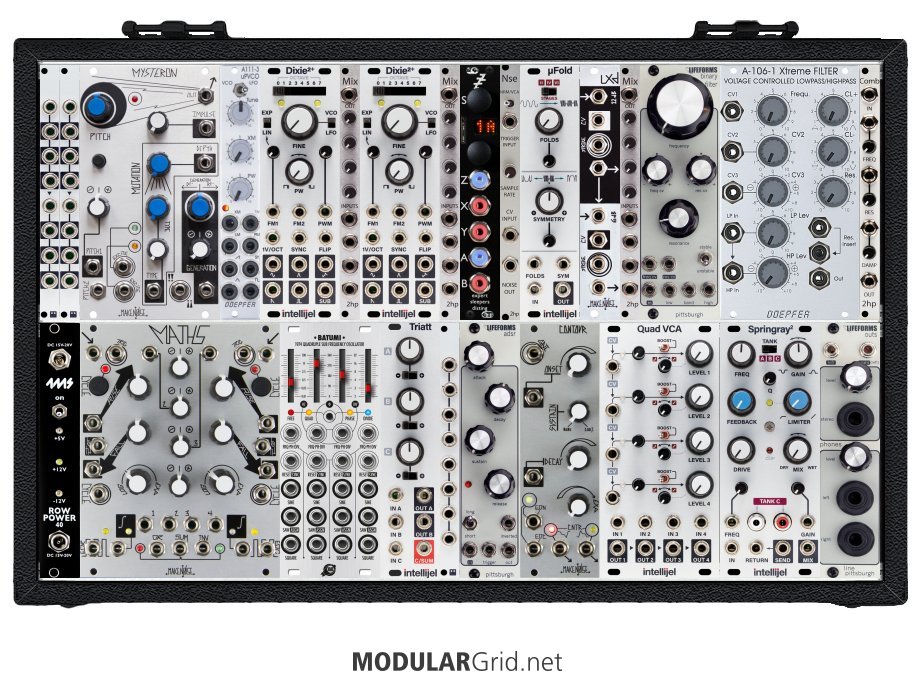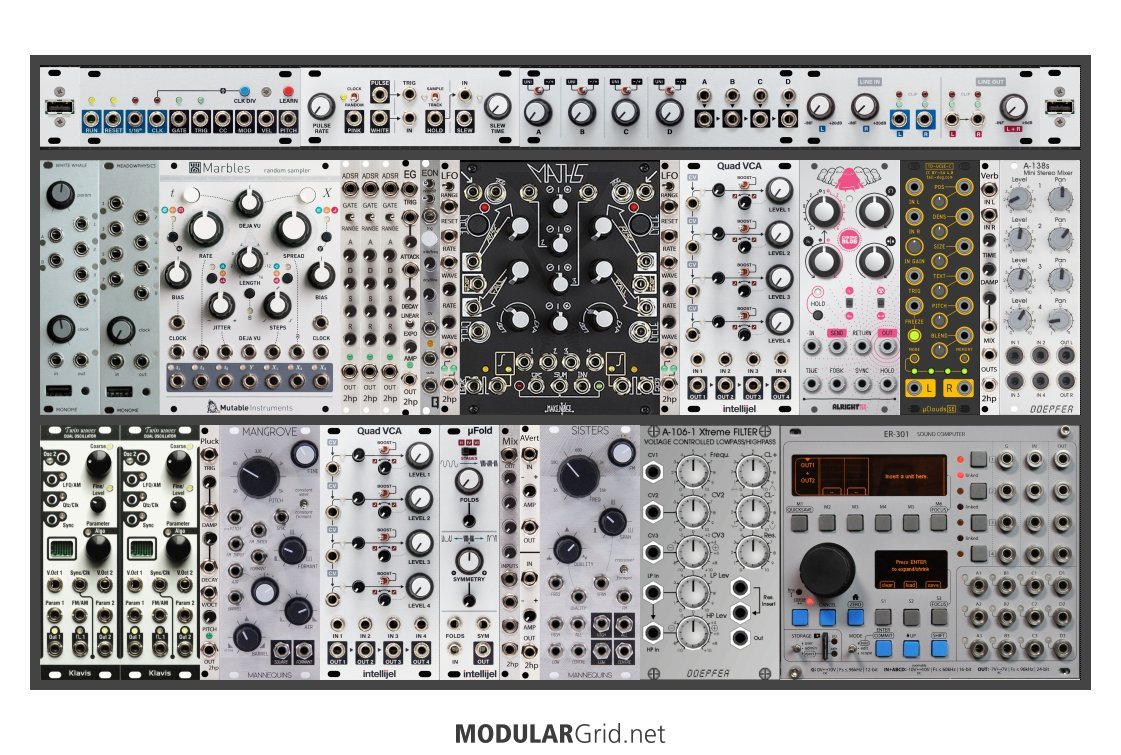A few things here are very missing...first of all, there's nothing that can function as an LFO-type modulation source. Given that the space in this rig is fairly tight, I'd suggest looking into something smaller than the typical 'hits', such as Maths, etc. Instead, look at something such as an Intellijel Quadra. At 12 hp, you get four AD envelopes that can be switched into a 'cycle' mode that allows them to function as definable-waveshape LFOs, so you knock out two things in one shot...a few more EGs, plus your LFO needs.
You have a noise source...that's good. But you have no S&H...that's bad. Sample and hold would allow you to sample the random sources from the A-118 and create random CV patterns when clocking it from the....ohhhh, yeahhh...that's absent, too. So not only can't you clock a sample and hold, the Voltage Block has no clock, which kind of makes it useless. Go and have a look at the matching Malekko Varigate 4+; you're going to need that to do timing duties for everything that needs a clock on here, in addition to the other bits of magic it can do for the Voltage Block itself.
Buffered multiple: lose it. This rig is too small to require it; two VCO destinations won't cause nearly enough CV sag to throw them out of tune/track. Given the size of this build, I'd suggest going with inline passive mult devices or stackable 3.5mm cables such as Tiptop's to split outputs to multiple destinations.
Filters...you went with the 'sexy' options here, and in this case, that's a mistake. While the Three Sisters and the Rings are excellent in of themselves, relying on only those for filtering is rather akin to having too much of the same thing. One of these needs to go so you can replace it with a not-as-sexy-but-necessary resonant-type VCF of some sort. Lots of possibilities there, ranging from basic to really nutzoid, such as Intellijel's new Morgasmatron or the Rossum Morpheus. But even boring-looking things contain surprises, like Doepfer's A-106-6, which is a version of the Oberheim Xpander filter setup...put a small mixer after that to combine different response outputs, and you've got something weird going on!
You also need an output stage; the Doepfer A-138s will still be at synth-level at its outputs, and it's necessary to get that down to normal line-level. Plenty of options exist, some of which also have headphone monitoring, balanced 1/4" outs, stereo ganged master level controls, and so forth.
Last thing I'd kick out would be the MIDI interface. It's...okay...but if you want USB interfacing, there's more capable options. Plus, that Doepfer interface isn't host-capable, so if you wanted to hook a USB controller directly to it, you'd be out of luck as nothing would happen. Instead, have a look at Expert Sleepers' FH-1...host-capable, fully-programmable, expandable (up to 64 outputs!), and has lots of tricks hidden in its firmware. Doepfer's great for a lot of things, but I've never been jazzed about their MIDI devices. On the other hand, Expert Sleepers are kind of control I/O specialists...this is very much their lane.
This is a decent start, but it needs some refinement. Best advice there is to avoid piling the cab up with 'cool sh*t'; instead, think more about 'boring' things that actually jack up the capabilities of the 'cool' modules. Those are the devices that really do a lot of the heavy lifting in a modular build.



